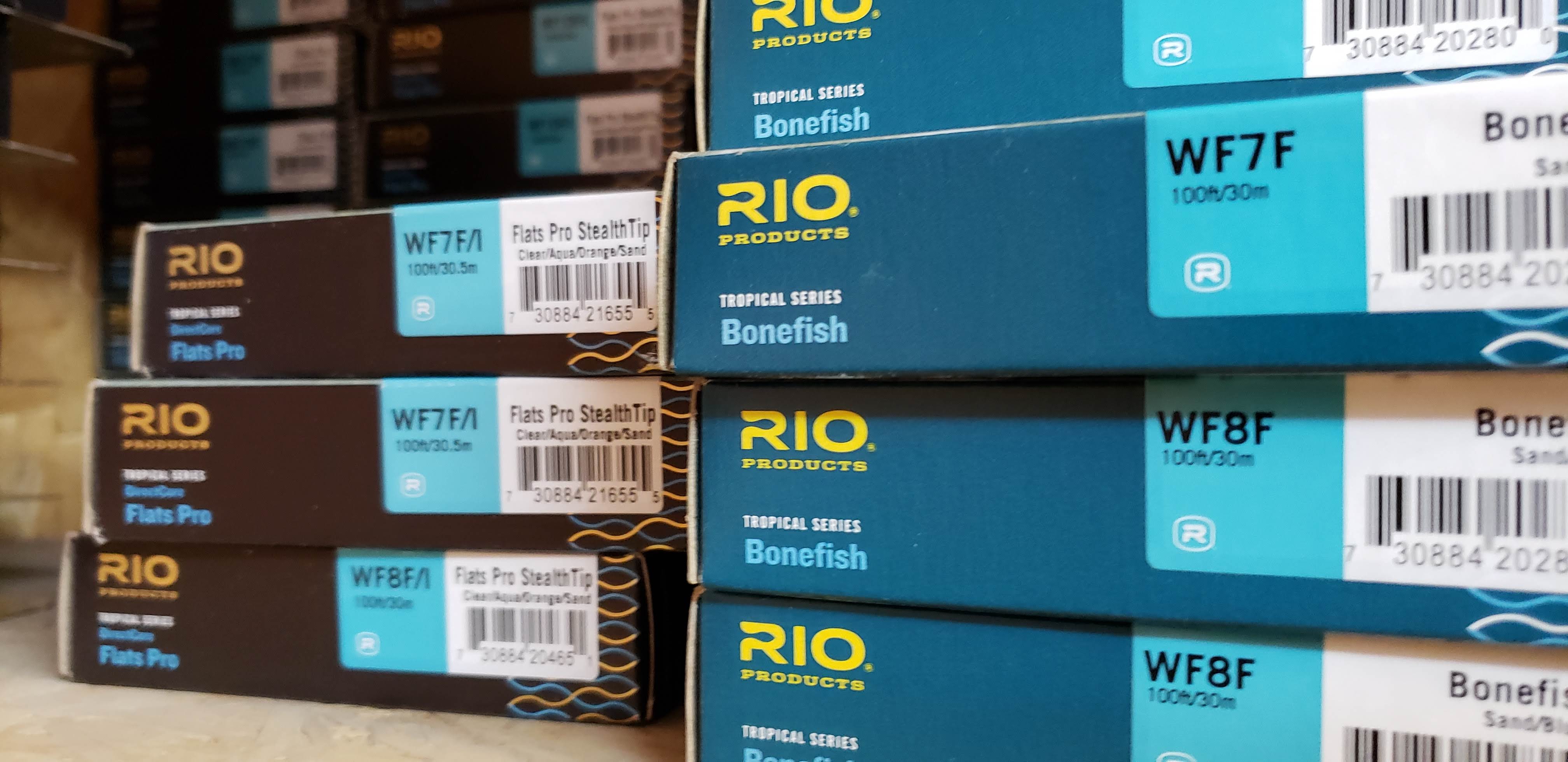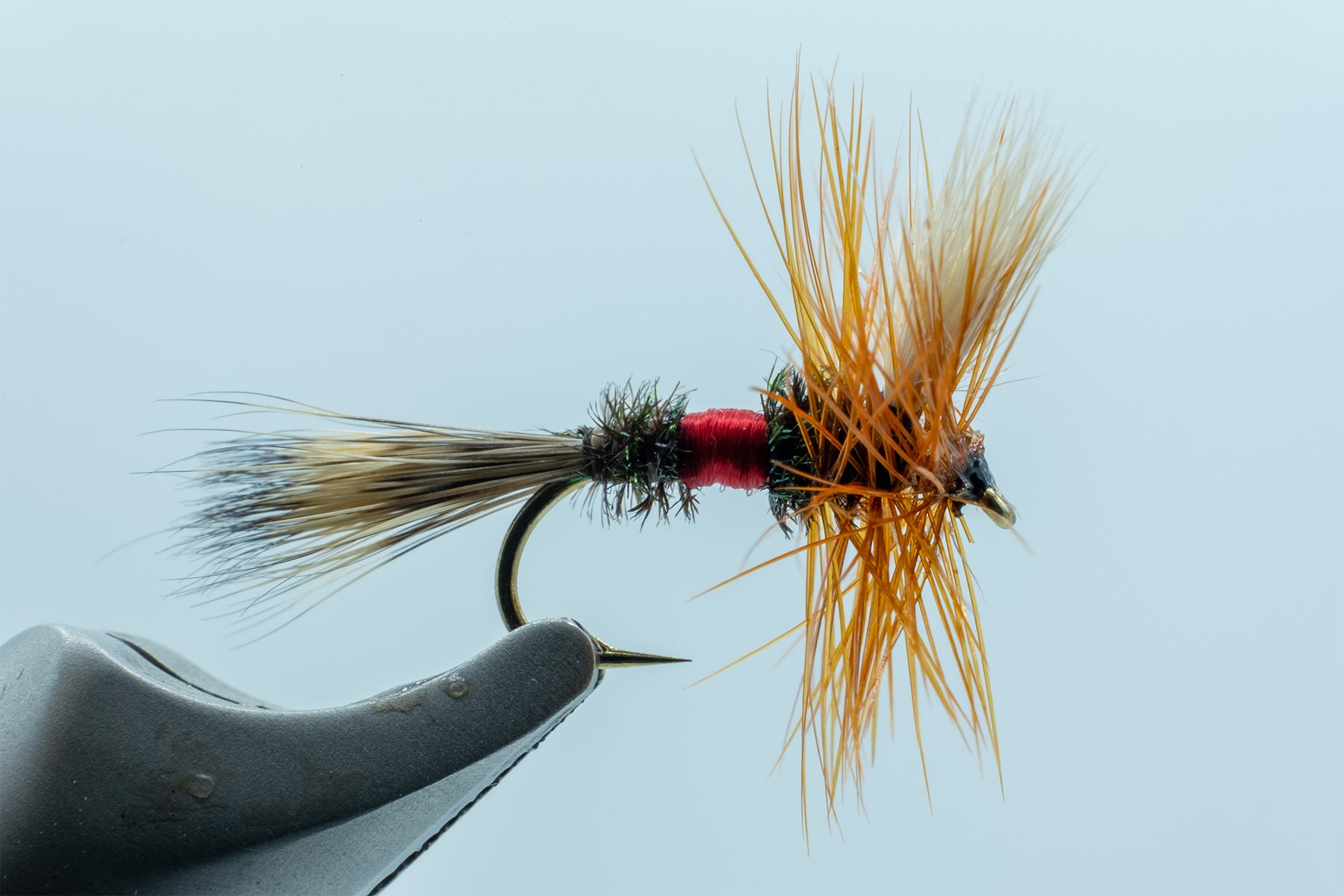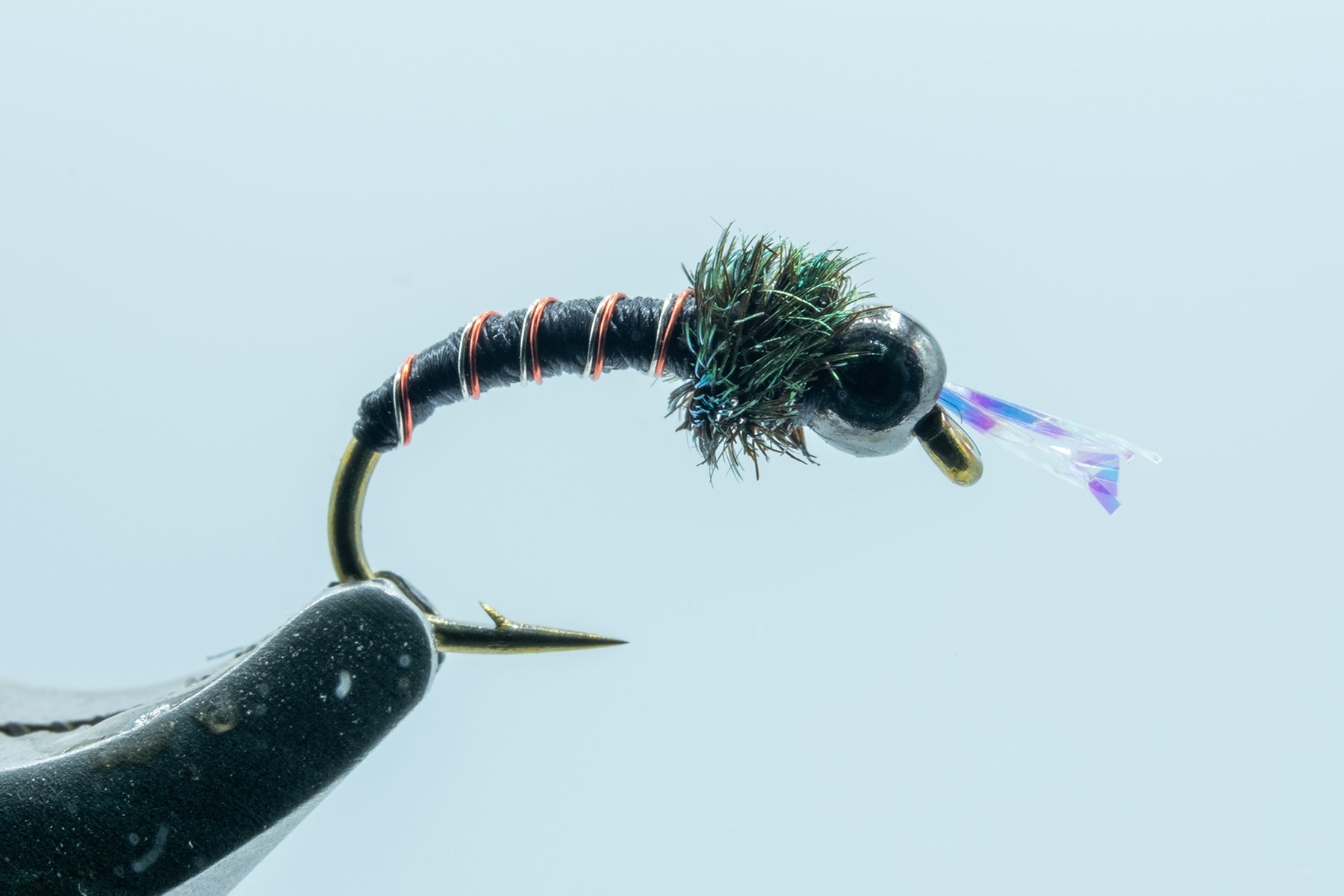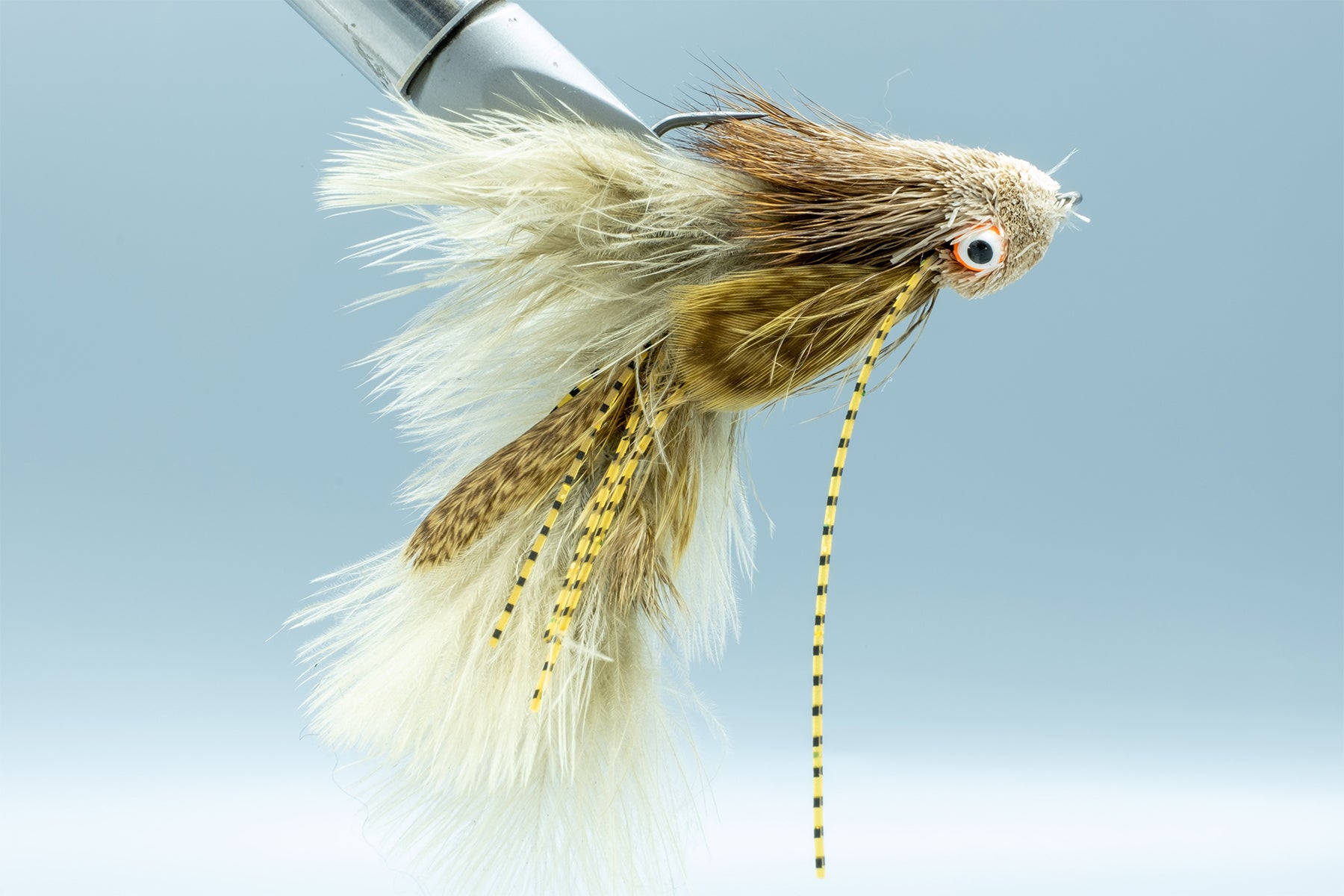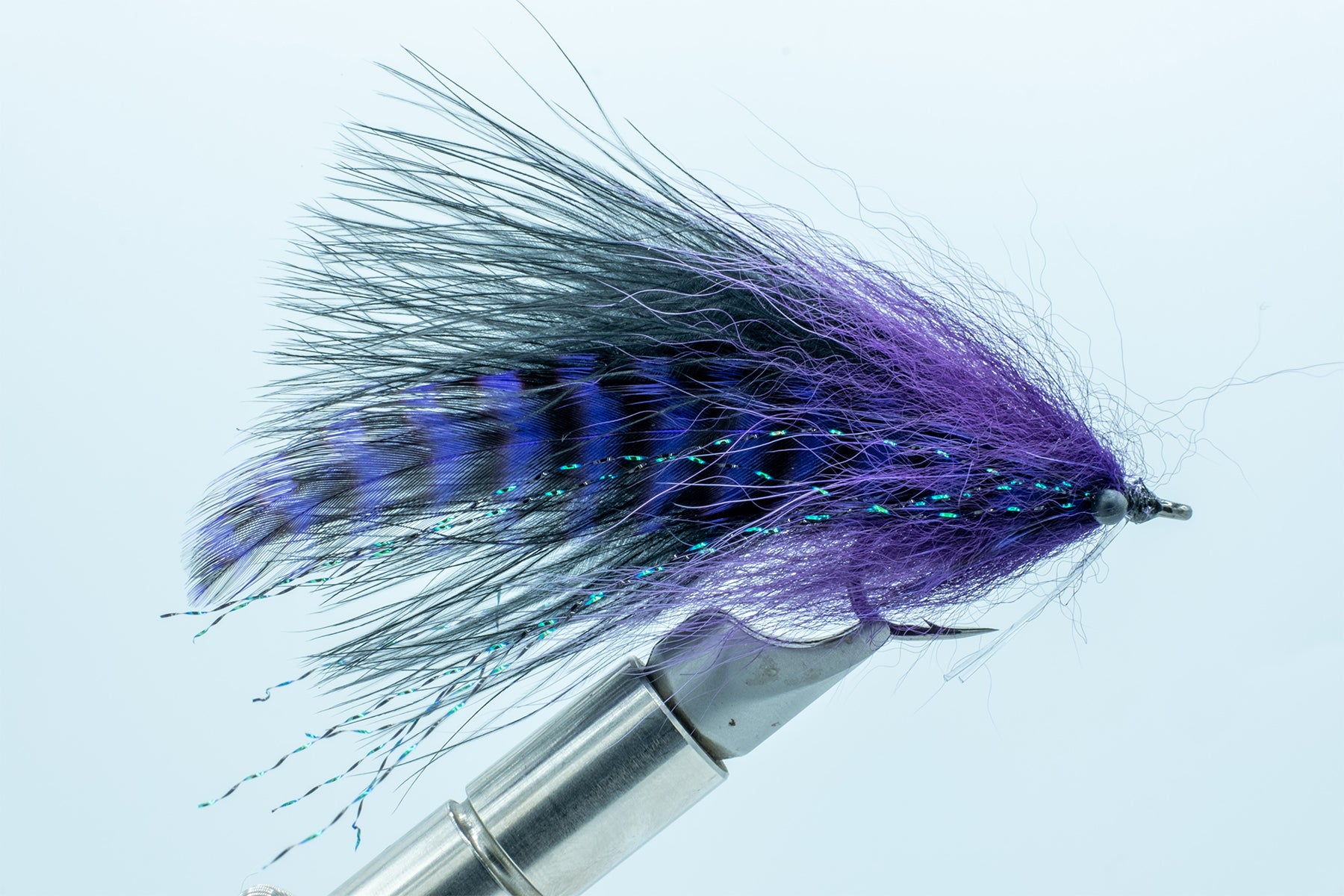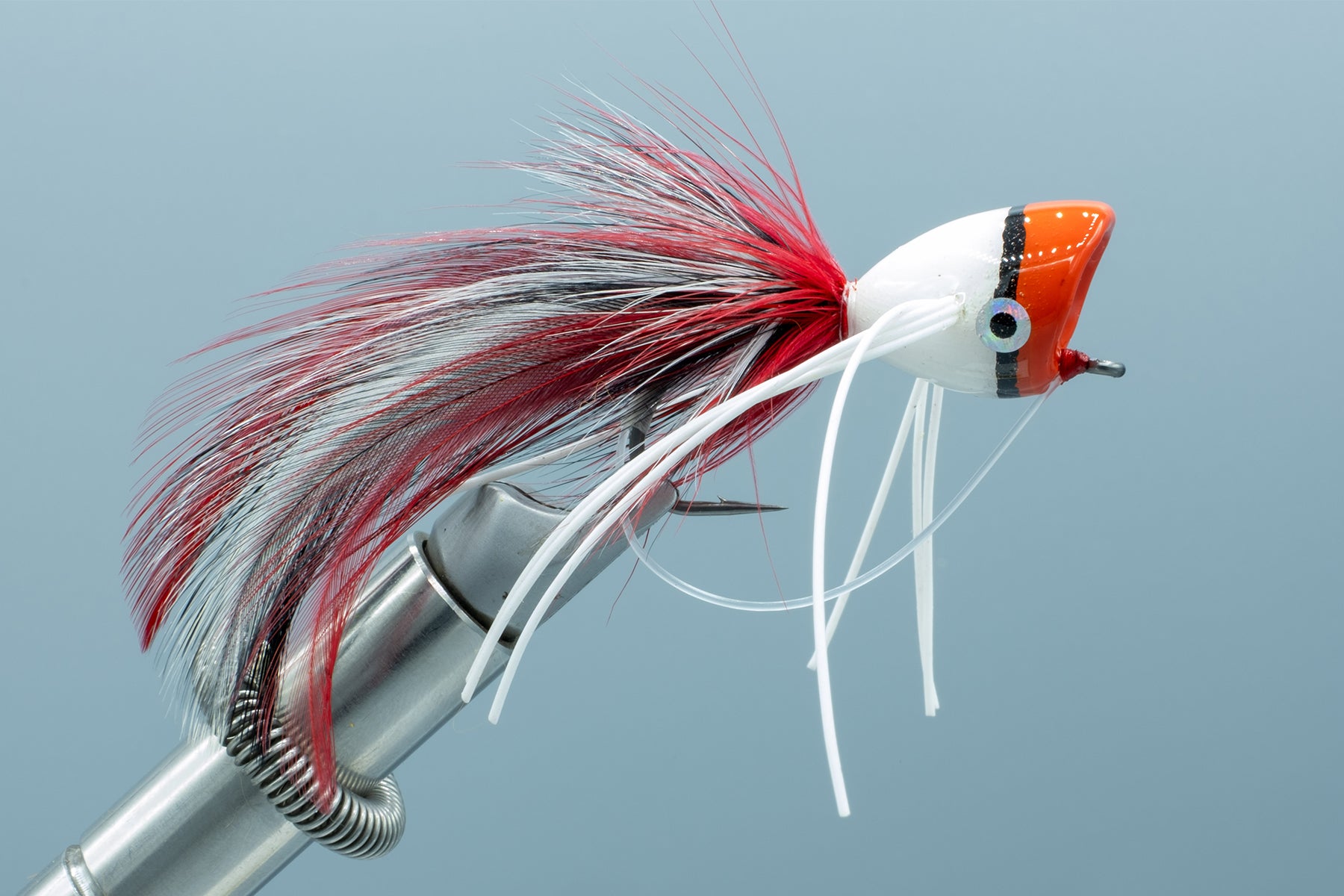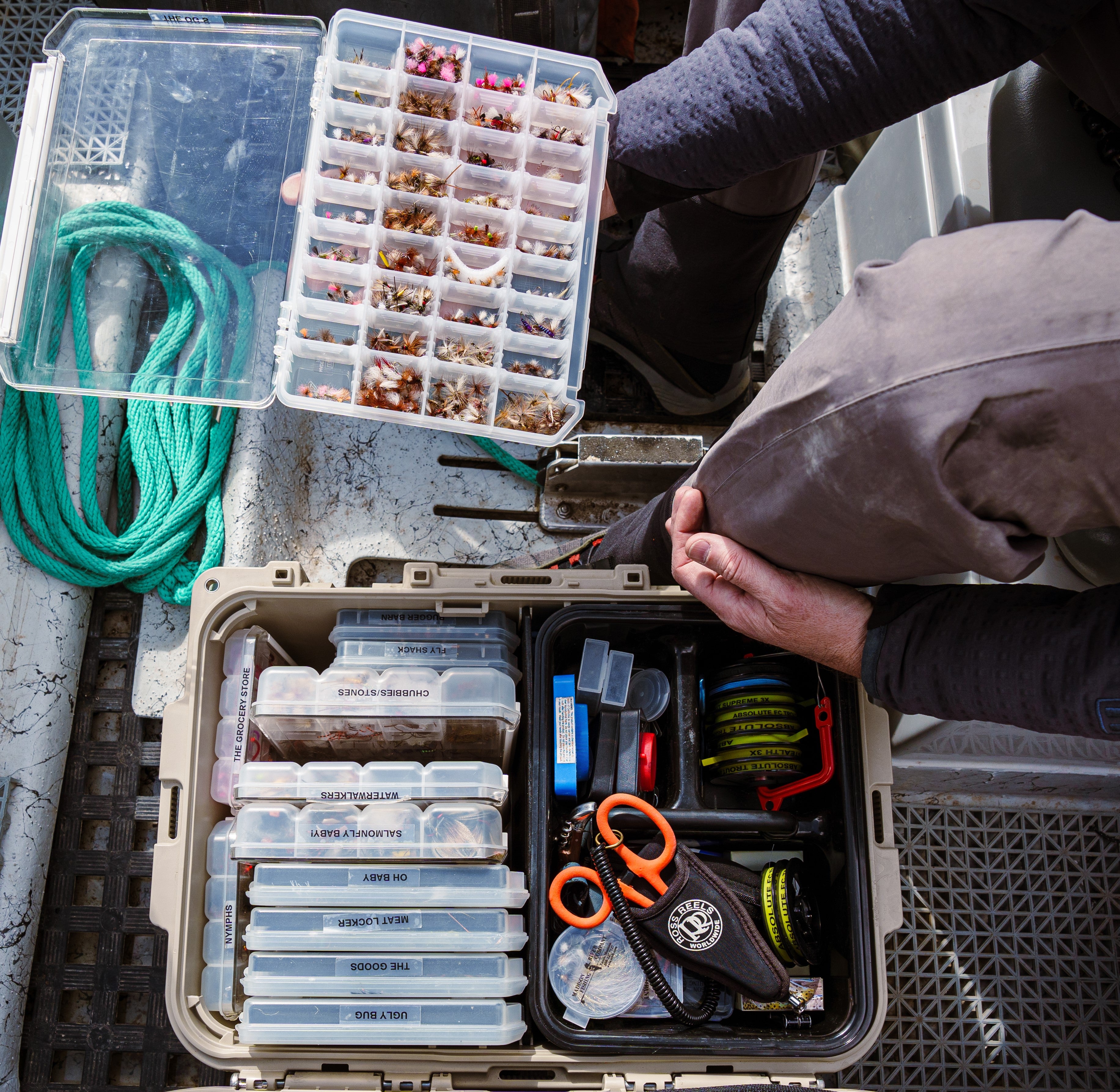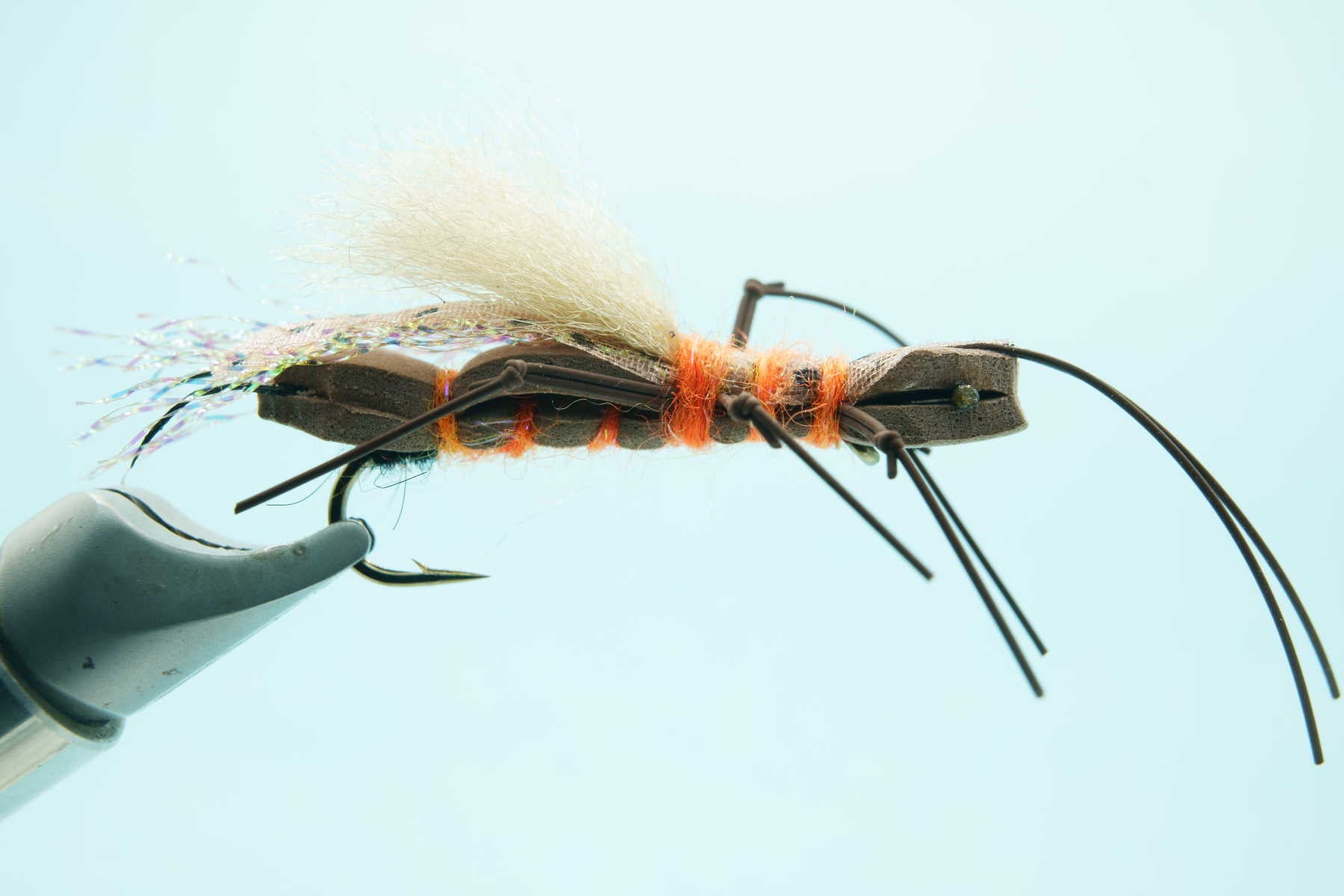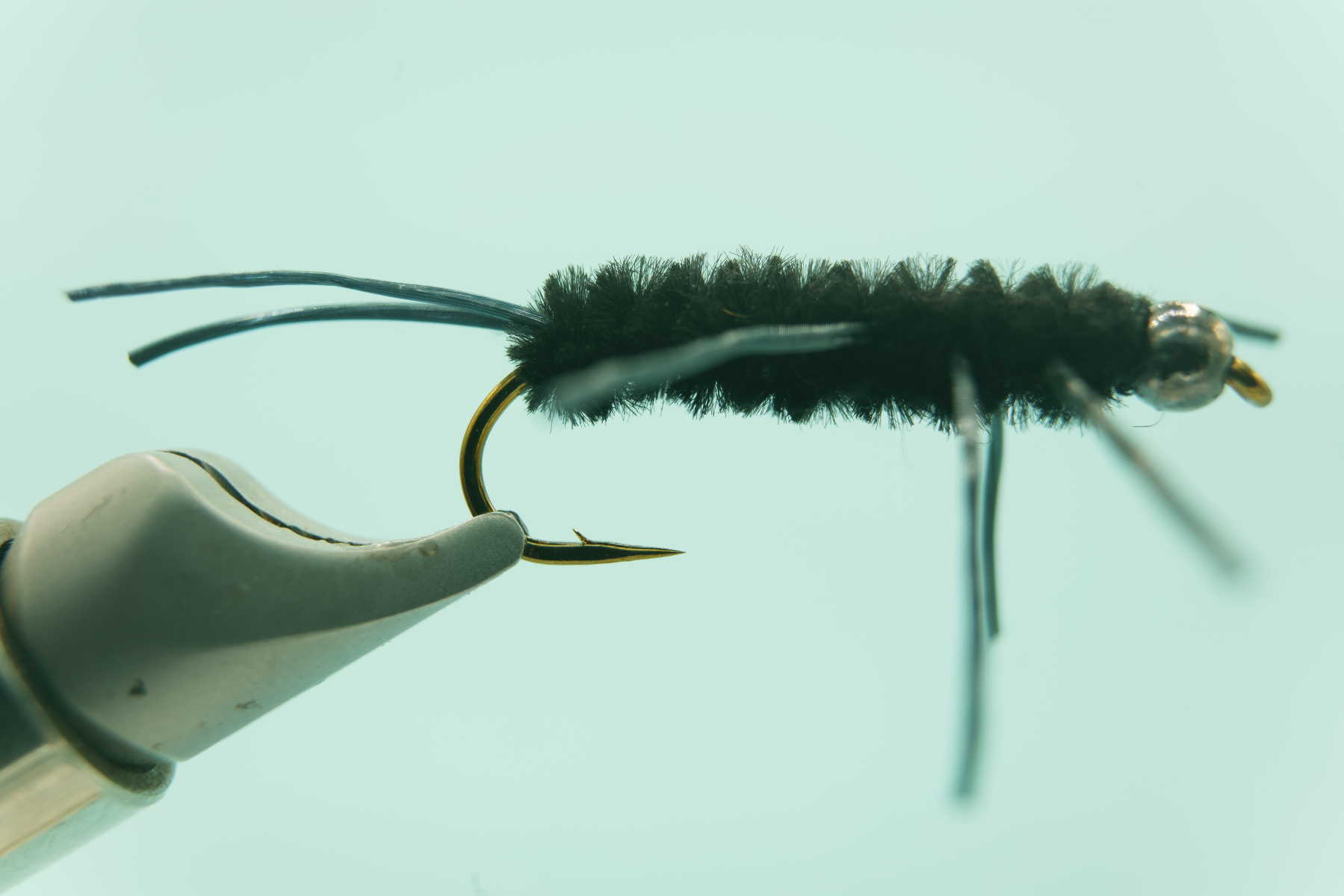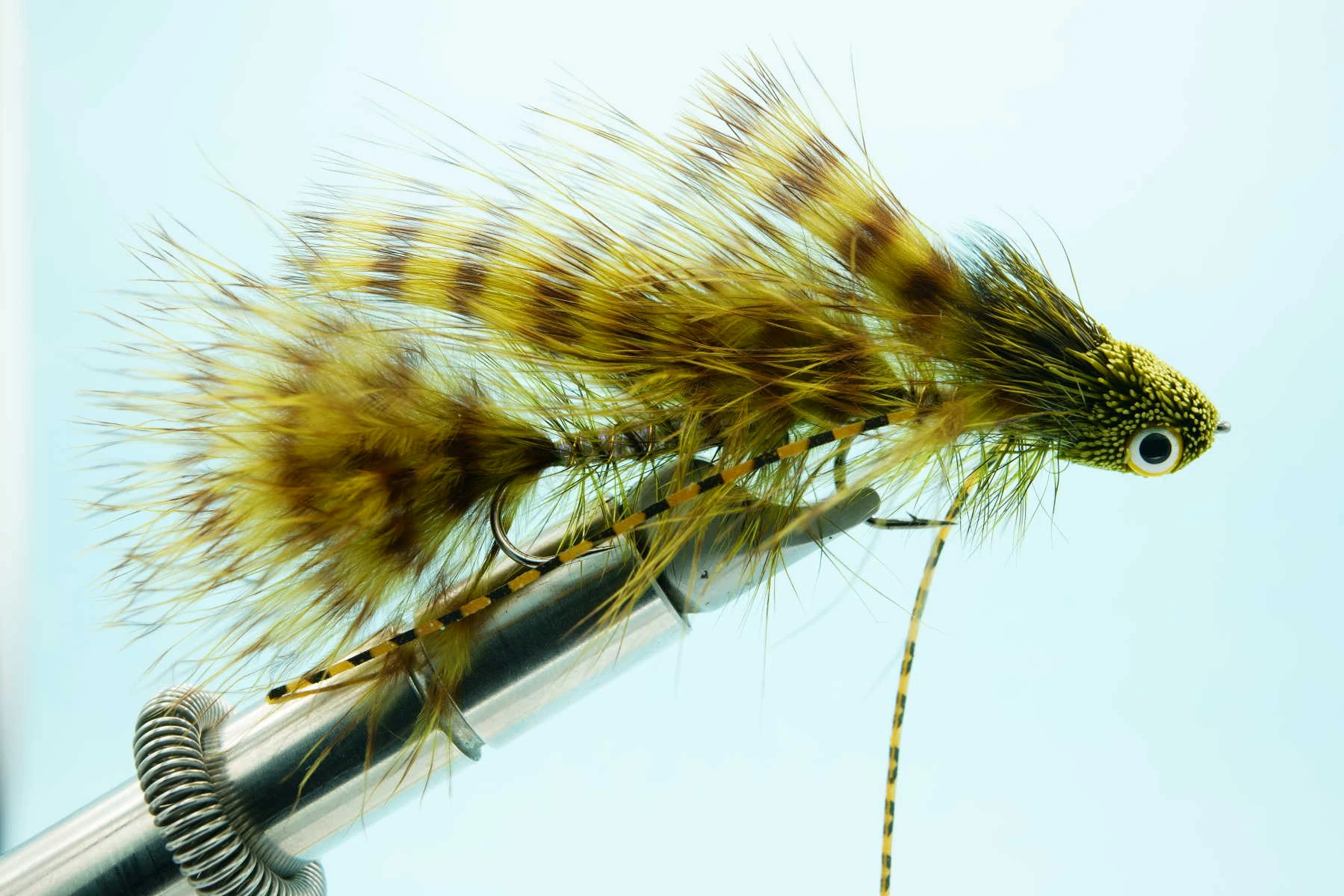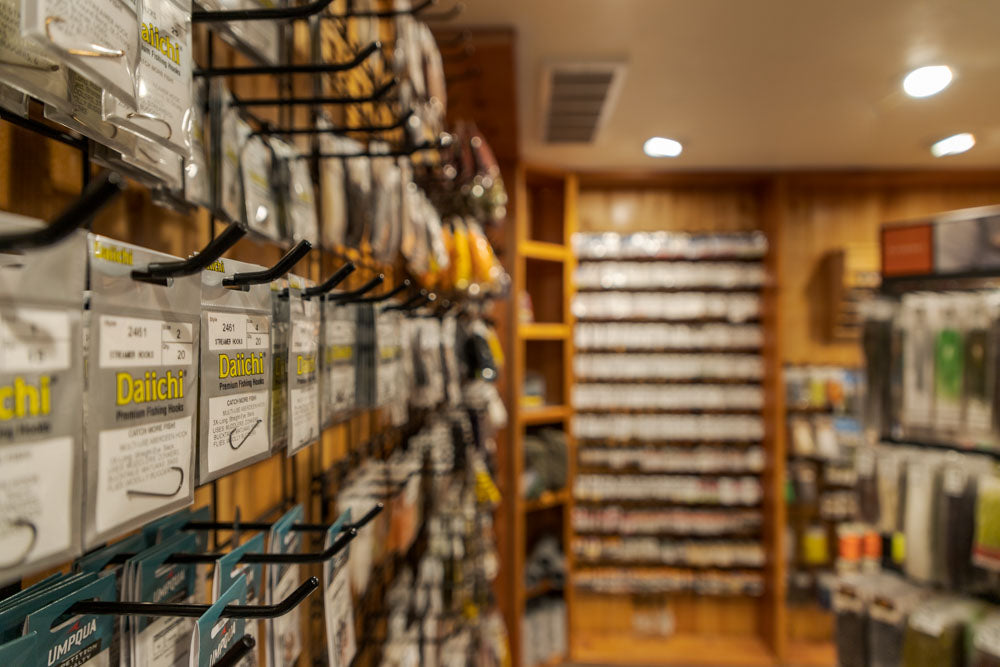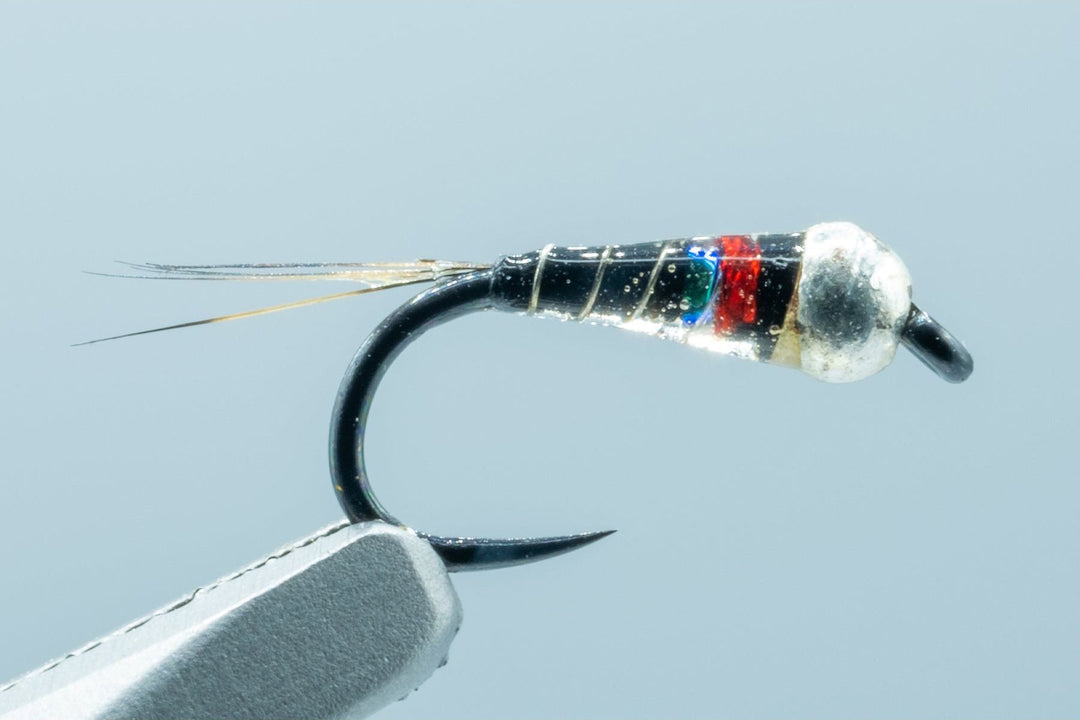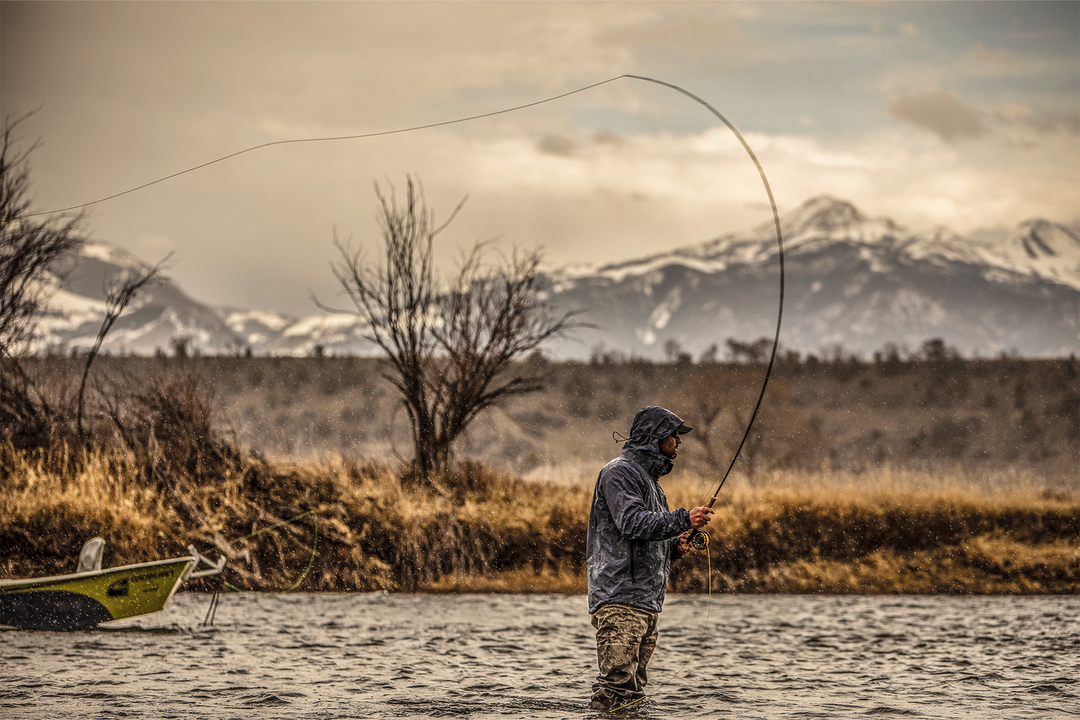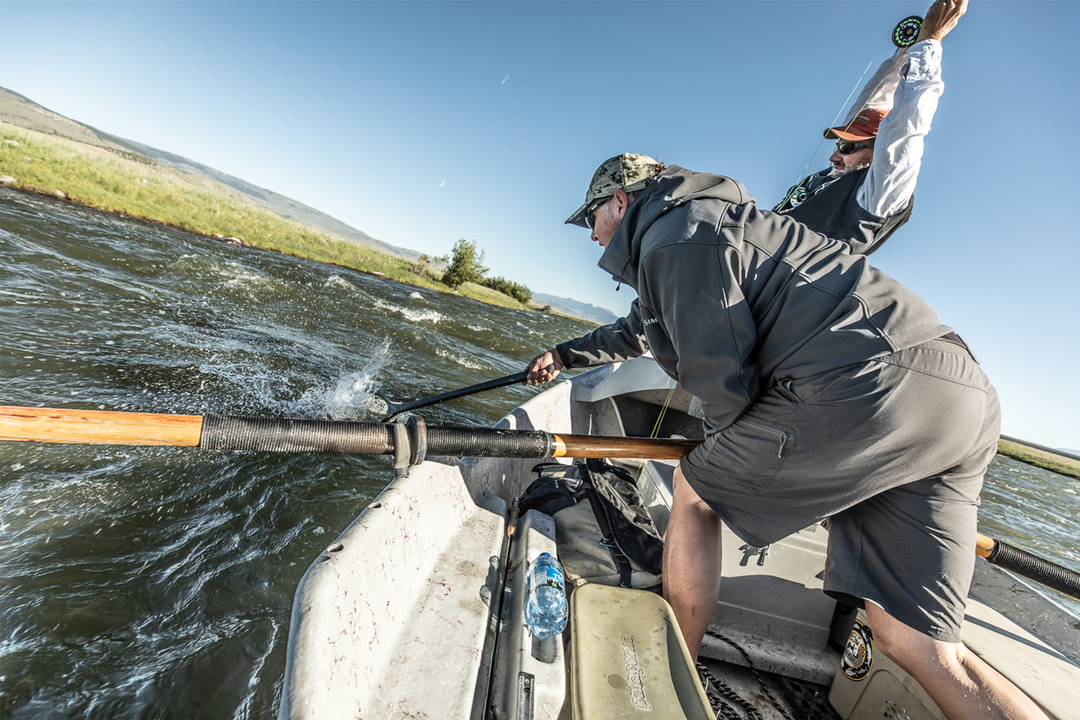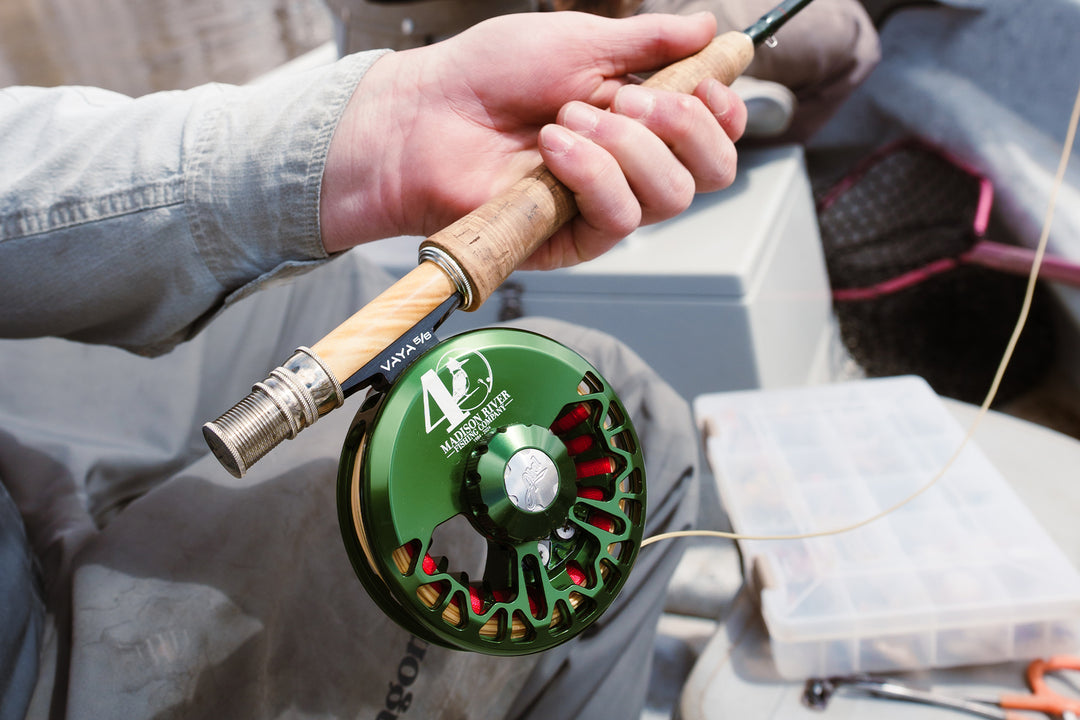The famous “Perdigon”: definitely something that escapes to the classic tying style. The perdigon “shotgun pellet” when translated to english, gives the feeling of being some ironmongery piece, embedded in a hook, and painted with more or less striking colors. There are a couple different stories, here is one of them.
The Perdigon began to appear in France in the late eighties, when some fly tyers looking for more weight for their nymphs, began to incorporate small balls of metal just behind the eye of their hooks, and later, to paint these with metallic varnishes, looking for a lower friction with the water and of course a greater speed of sink. An early version of the Perdigon is “La Ceramique” very well know in France in the late 80’s and 90’s until today.
Clearly, this work was simplified when a few years later our well-known "Bead Heads" appeared on the market; first made of brass, then bronze, and lately tungsten, which adds impressive weight to any nymph.
The perdigones, as we know them today, appeared in Spain about 15 years ago. By the beginning of the 2000s, my old friend José Carlos “Asturiano” Rodríguez (a Spanish fisherman of high competing level), received from a friend, the “Catalan” José María Cros, a nymph tied on a small hook, with bright thread, a small tungsten bead, a few turns of lead thread, and varnished with nail polish.
Soon, among friends, they named these nymphs "Las Chinas", alluding with this name to the varnish of nails that they bought in the chinese stores settled in Spain. Finally, Rodriguez renamed these nymphs as "Perdigones", when he gave some of his "Chinas" to another fisherman and our common friend, Iñigo Urruzuno, and he reacted by saying: "But what do you give me here? Perdigones (Shotgun pellets)?" After this anecdote and with the passage of the years, the perdigones have achieved a unique popularity among the nymph fishing specialists in the old continent and around the world.




